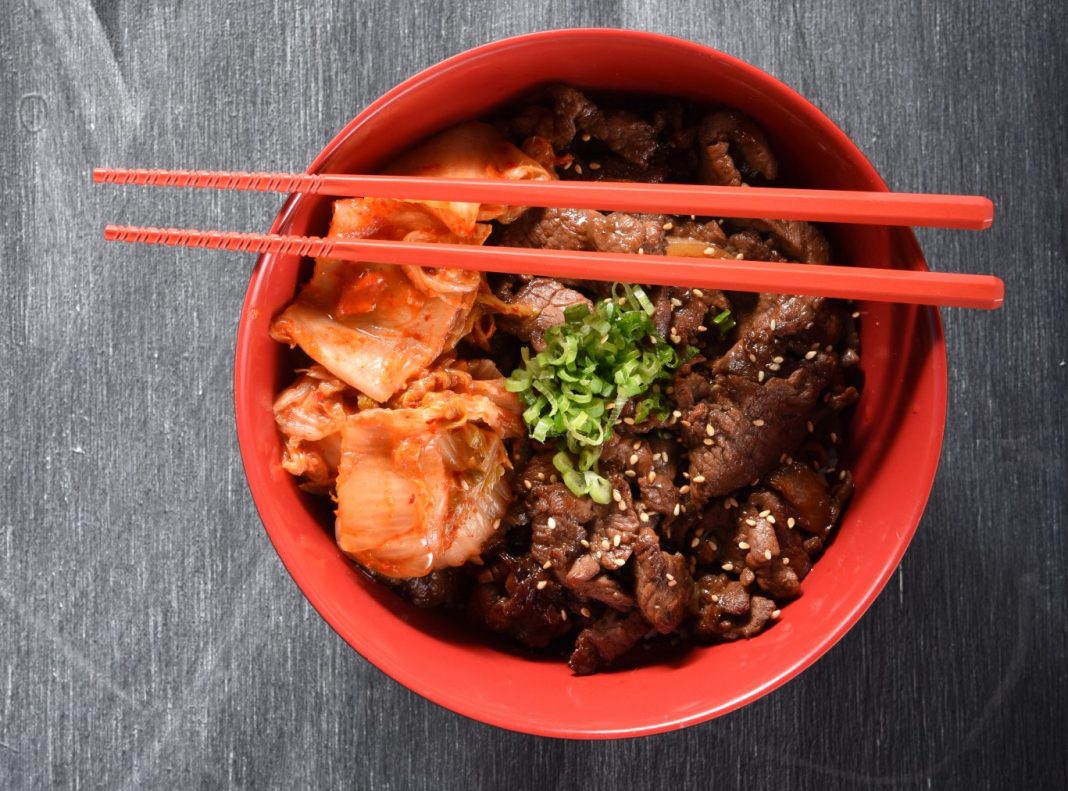Humans have been using bowls for at least 15,000 years, first carving them into limestone bedrock, then later fashioning portable bowls from wood, bone, horn and shell for processing, storing, carrying and serving food. For much of the past century, bowls seem to have ranked lower in the table-setting hierarchy than flat plates. But in recent years that’s begun to change as diners increasingly take to convenient one-dish pleasures like Ramen, Pho, Burrito Bowls, Mashed Potato Bowls, Poké Bowls and Buddha Bowls, not to mention the classic appeal of soup and salad bowls.
We asked some F&D writers to go bowling through the restaurants of Louisville and search out some of the best offerings in the city. Here’s what they found.
Red Curry | Lá Quê
1019 Bardstown Road | 238-3981
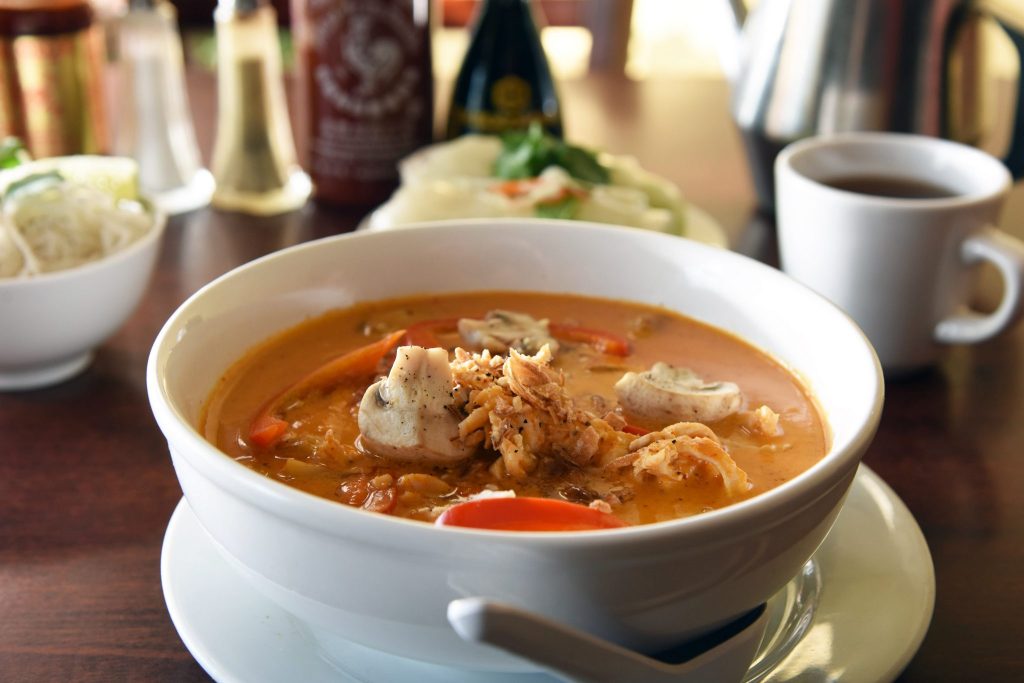
Alex Roma • The search for the city’s best bowls started with F&D Publisher, John Carlos White. He has been singing the praises of this dish for quite some time. “It’s a comfort dish that leaves you feeling like your mom just gave you a big hug,” he said. And when he feels a bit under the weather, he claims that a bowl of Lá Quê’s Red Curry always seems to bring him around.
Lá Quê is not a big place. Passing it on the street, it’s a small, pale-green, one-blink-and-you’ll-miss-it storefront. That’s cool, because the inside, too, feels small and intimate — exactly the kind of place you’d love to discover when you’re in search of quality food at a bargain price.
When I visited, there was one other customer inside, seated by the window. He ordered the Red Curry — and he echoed exactly what I’d already heard. “Every time I’m sick,” he said, “it clears me right up.”
Me, I’m thinking, “Maybe they should bottle this stuff and start selling prescriptions!”
It turns out that Lá Quê serves three different types of curry — green, yellow, and red. All of these varieties have their partisans. But the recipe for the Red Curry was created by the founder of Lá Quê, Hanh Duong, who adapted the recipe from one created by her grandmother. And that, is part of the secret. Hanh Duong’s grandmother’s original recipe was for a yellow curry.
Yes, this red curry has the heat and spice you might expect, but it’s tempered by the sweeter, more delicate and nuanced notes reminiscent of a milder yellow curry. Ordered with chicken and mushrooms (it’s also available with tofu, mock chicken, and other proteins), served with rice, it delivers comforting warm flavors that are perfect for a cold rainy day.
These days, Lá Quê Chef Chinh Dinh (whose wife Xo Thach now leases the restaurant from Hanh Duong) cooks up batches of the Red Curry at least once or twice a week, starting a new batch whenever supplies run low.
When I reached Hanh Duong, she told me that her grandmother left China during the Second Sino-Japanese War (1937-1945) and moved to Vietnam, where she raised her young children — and eventually, to share her cooking with her granddaughter. Duong told me that her grandmother’s recipes were, “Not something she would write down. Instead, you would ask what’s in it, and you would watch, and the cook, and then eat, and then talk about it. That’s how we learned to cook throughout those years.”
“I do everything the same as then,” said Hanh Duong. “But I cut down on the yellow spices and I add red spices to it.” That, she says, is the secret of Lá Quê’s Red Curry — and maybe it accounts for the dish’s magical healing powers.
But Hanh Duong has another secret tip: She says the dish is even better if you replace the rice with rice noodles (which Lá Quê will happily accommodate) and squeeze fresh lime juice in the bowl as you go.
Drunken Chicken | J. Gumbo’s
1616 Grinstead Drive | 873-5006
2109 Frankfort Avenue | 896-4046
8603 Citadel Way | 493-4720
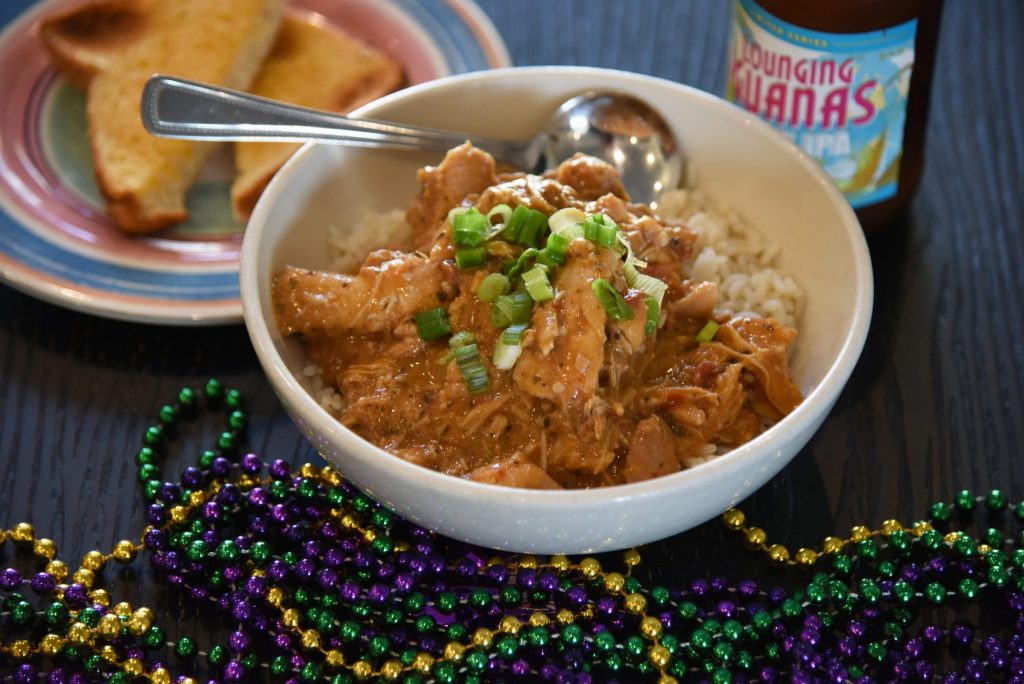
Michael Jones • One way or another, cooks have been marinating, simmering, and steaming poultry in alcohol for thousands of years. But it took American ingenuity to invent the most important poultry breakthrough of all time: Beer Can Chicken, which barbecue maven Steve Raichlen says probably originated in Louisiana.
J. Gumbo’s Drunken Chicken doesn’t involve a beer can, but it, too, involves simmering in alcohol. And it, too, too originates in Louisiana, where Billy Fox, Jr., founder of the New Orleans-inspired chain J. Gumbo’s, developed his recipe 20 years ago, in 1999.
It’s a winning recipe, which isn’t surprising since Fox is a former thoroughbred jockey whose 5,785 mounts earned over seven million dollars during his career.
Fox’s recipe for Drunken Chicken hits the tongue with a judicious tingle that lingers and lures you to keep grabbing bite after bite. The recipe, of course, is a well-guarded blend of spices that everyone would like to duplicate. In fact, it’s a tribute to the dish’s popularity that there are plenty of knock-off recipes online that claim to have captured its essence.
Joseph Montgomery, co-owner of the J. Gumbo’s franchises on Grinstead Drive and Frankfort Avenue, knows this dish as well as anyone — and he’s completely dismissive of those efforts. Not likely, says he. “If there is somebody out there that has something that tastes like our Drunken Chicken, they’ve really got something!”
Montgomery says the Drunken Chicken is the number one best seller at his restaurants. Most customers order it over rice. Some customers prefer it over macaroni. And a few regulars actually skip the bowl entirely, preferring it burrito-style, wrapped up with white bean chili, rice, cheese and jalapeno.
Either way, it’s a great dish for the season.
Buddha Bowl | V-Grits & False Idol
1025 Barret Avenue | 742-1714
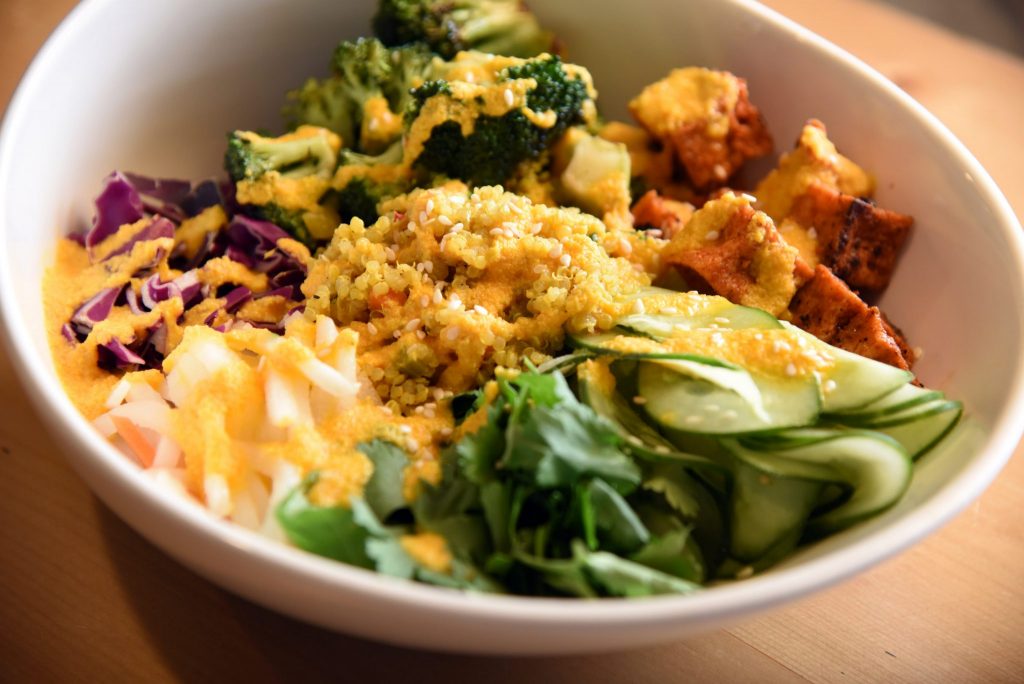
MJ • V-Grits started out as a food truck offering vegan comfort food. But in late 2018, when owner Kristina Addington decided to make the move from a truck to a full-blown bricks and mortar restaurant, her vision was to add healthy alternatives to the southern-style, deep fried dishes that had dominated her truck menu.
That’s when her Buddha Bowl entered the picture. Addington says that although most buddha bowls feature Asian ingredients, she believes the name and the concept probably originated in the United States.
“Buddha bowls have become really common as part of plant-based or vegan diets,” she explained. “They’re called buddha bowls, because they’re really full, round beautiful bowls and they’re overflowing kind of like a Buddha’s belly. That is where the original name came from.”
The V-Grits version of a buddha bowl features vegetables prepared in a variety of Asian techniques. The star of the dish is tofu prepared with Gochujang, a red chili paste found in Korean markets. The tofu is first cooked off, then marinated in the Gochujang and then fried. Then the bowl is enhanced with sesame-roasted broccoli, red cabbage, pickled veggies, rice wine-marinated cucumber, quinoa, pickled carrot and daikon, a Japanese radish, along with a carrot ginger miso dressing.
V-Grits Executive Chef Zach Kerr told me, “We really wanted to stick with the Asian theme because we didn’t have a lot of things in the restaurant that focused on that. As a chef,” he continued, “the thing that really excites me about the Buddha Bowl is that anything goes. They are extremely versatile, and you can really adapt them as the seasons change or new ingredients become available.”
In the V-Grits Buddha Bowl, it’s the lively interplay of sweet and savory ingredients that really sets the dish apart. On the day I visited, I loved the textures, flavors, and aroma of the sesame-roasted broccoli and the chili-inflected heat of the tofu. I’m not ready to give up my omnivorous ways, but this Buddha Bowl will definitely be an option when I’m in search of a healthy meal.
Pho | Pho Ba Luu
1019 E. Main Street | 384-6822
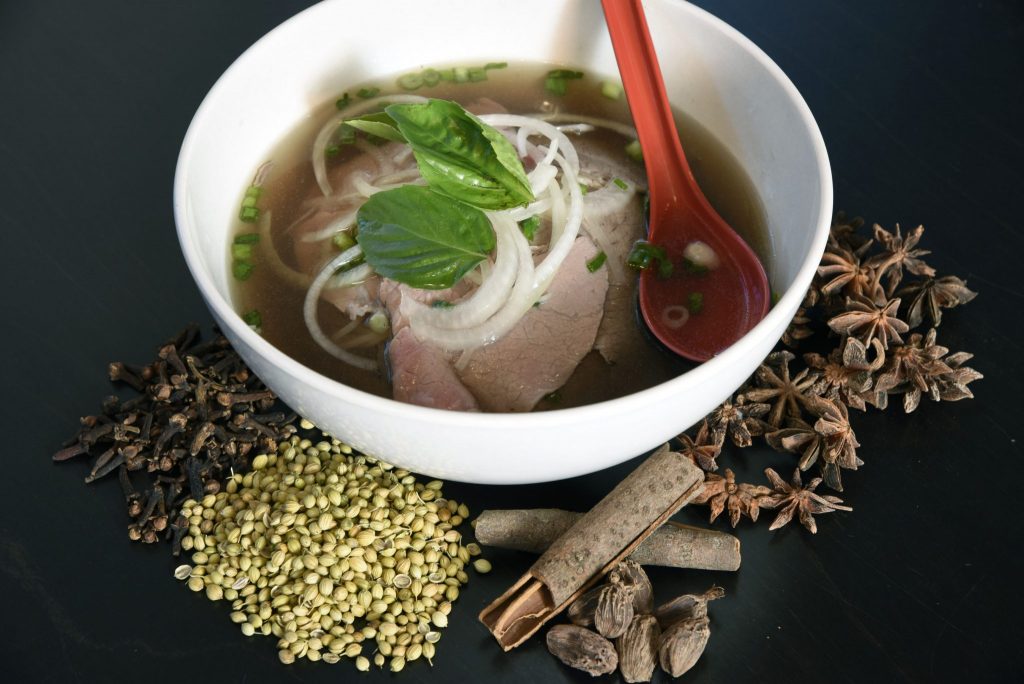
MJ • Pho, pronounced fuh, is a traditional Vietnamese soup consisting of broth, rice noodles, herbs and meat. When Jessica Mach was growing up in Saigon, Pho was available from street vendors on every corner. But Mach’s favorite was the soup her mother made at home from a family recipe passed down through generations.
That family recipe is the one Mach brought with her to America when she opened Pho Ba Luu with her partner Stewart Davis in 2016. In fact, the English translation of the restaurant’s name is “Mrs. Luu’s Noodle Soup.”
Still, Mach acknowledges she did update her mother’s cooking process for her mother’s beef bone broth to meet the high volume at her restaurant.
“With a steam kettle,” she says, “we can maximize all the flavor from that beef bone. We can put it on as long as we want and it doesn’t burn,” she explained. “We use about 60 gallons of water to cook up to 120 pounds of meat bones and 50 pounds of brisket for two days. During the last 30 minutes of the process, we grill onions, ginger and herbs and add them to the pot to activate the fragrance.”
It’s this cooking process that makes the flavor in Pho Ba Luu’s broth so intense and satisfying. One rainy day, F&D visited the restaurant and sampled the Beef Pho, which comes with thinly sliced rare steak and brisket in the beef broth. Mach said she cooks the streak and brisket rare because the meat continues to cook once it hits the hot broth.
“You get tender steak that is cooked to the time that you eat,” she added. “My mom used to say, ‘We don’t eat a lot, so why don’t we treat ourselves really good. One bite should be worth taking a bite.’ That’s my mentality.”
Chili | Check’s Café
1101 E. Burnett Avenue | 637-9515
14049 Shelbyville Road | 244-6868

AR • The chili at Check’s has scarcely changed since the 1950s, says owner John Murrow. “I definitely don’t mess with the recipe,” he says. “It’s always been where you pile it as high as you can, and let the stuff run over the side… we just throw it in there and let it roll.”
It’s a recipe as old as — if not older — than Check’s itself.
“It’s my grandmother’s,” Murrow explains. His grandparents, Joe and Mary Murrow, bought the then-bar from Check Sumpter in the 1940s and soon began to fill it with Mary’s cooking. Today, Check’s brings in customers from all over the city, including those from younger generations whose parents or grandparents grew up eating at Check’s. Of course the popular spot has undergone plenty of remodeling over the years, as well as the addition of a few TVs (“I’d add more if I could,” says Murrow, a self-proclaimed TV addict). But it has a laid-back, no-frills neighborhood vibe that seems rooted in its history. It’s the kind of place, says Murrow, where “you never know who you’re going to sit next to.”
It seems like anytime you visit there’s a bustle of activity, conversation, and movement. Even when I dropped in for a late lunch almost every table was full and there was a long line to the counter.
When you order a bowl of chili the friendly folks behind the counter dip a ladle into the large pot right in front of you and hand it over. In an age of neat, trendy portions, there’s something to be said for a bowl of chili so full that you have to maneuver carefully as you jostle through the crowd for fear of spilling your bowl of red.
“Loaded,” the chili comes with the classics — cheese, onions, and spaghetti noodles. This chili goes down smooth, not too spicy but warm and filling. The onions and sprinkled cheddar cheese add an extra kick of flavor without overdoing it. It’s the perfect bowl for customers coming in from the winter cold and shedding their heavy coats – but Murrow says it’s always popular, no matter the season or the weather.
Beef Bulgogi | Ramen House
1250 Bardstown Road [Mid City Mall] | 709-4374
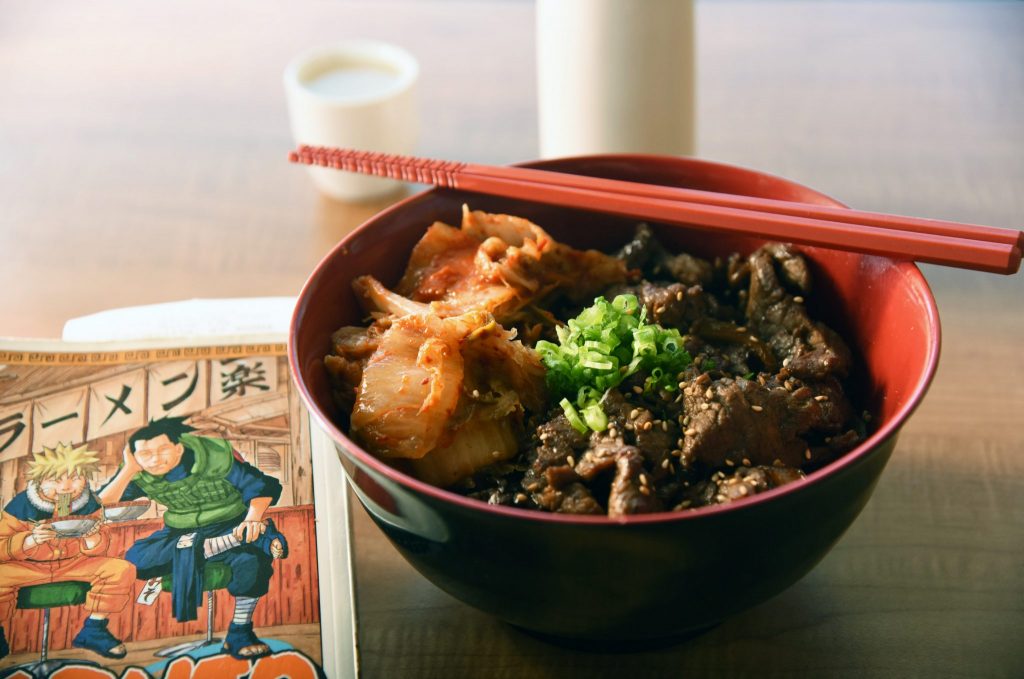
AR • “Whenever I play the game of, ‘if you had to eat one meal what would it be?’, it would be that dish right there,” Chef Jon Ham explains. He’s talking about the beef bulgogi he serves at the new Ramen House in the Mid City Mall. When you taste it, it’s easy to understand why it’s one of our favorite bowls of the season here at F&D. It has a little of everything.
Bulgogi (a Korean word that translates as “fire meat”) is marinated beef grilled on a stovetop. In the bowl, it’s complemented by kimchi and rice. From top to bottom, every bite is a fun blend of tastes and texture. First comes the beef — spicy and richly seasoned. Then the simple comfort of the rice. And finally, at the very bottom of the bite, you find the cool tang of the kimchi. It’s a dish that looks as good as it tastes, as colorful as it is flavorful.
The Ramen House space is colorful as well. The room sports a mix of Asian-inspired art and delightful bursts of pop culture. On a recent visit, one server wore at least a dozen enamel pins featuring beloved animated characters — with the Japanese manga hero Naruto front and center. When you step into the restaurant, one wall holds a shelf covered in pop vinyl figures. And for those of us who love the whole manga scene, the finishing touch is great: the check is delivered to the table in the pages of a manga book.
It’s hip. It’s fun. It’s now. And the Beef Bulgogi bowl fits right in. But it turns out the recipe is actually an old story for Chef Ham.
“I grew up eating that dish,” he says. “My mom would make that for me.” And even ten years into his career as a chef, Ham says he still uses his mom’s recipe — though he adds, “I do put my own twist on it,” using traditional spices and ingredients like sesame oil or a bit of brown sugar to bring out a sweet note.
The thing is, Ramen House may be named after the titular dish — but don’t discount the rice bowls. “People come for the ramen,” says Ham. “And then they see everything else on the menu and go ‘Oh, I have all these options,’” Ham explains. “It’s kind of an add-on at this point, but I do think there’s a market to do something bowl-heavy, too.”
And based on the Beef Bulgogi, I’d have to agree. F&D


















